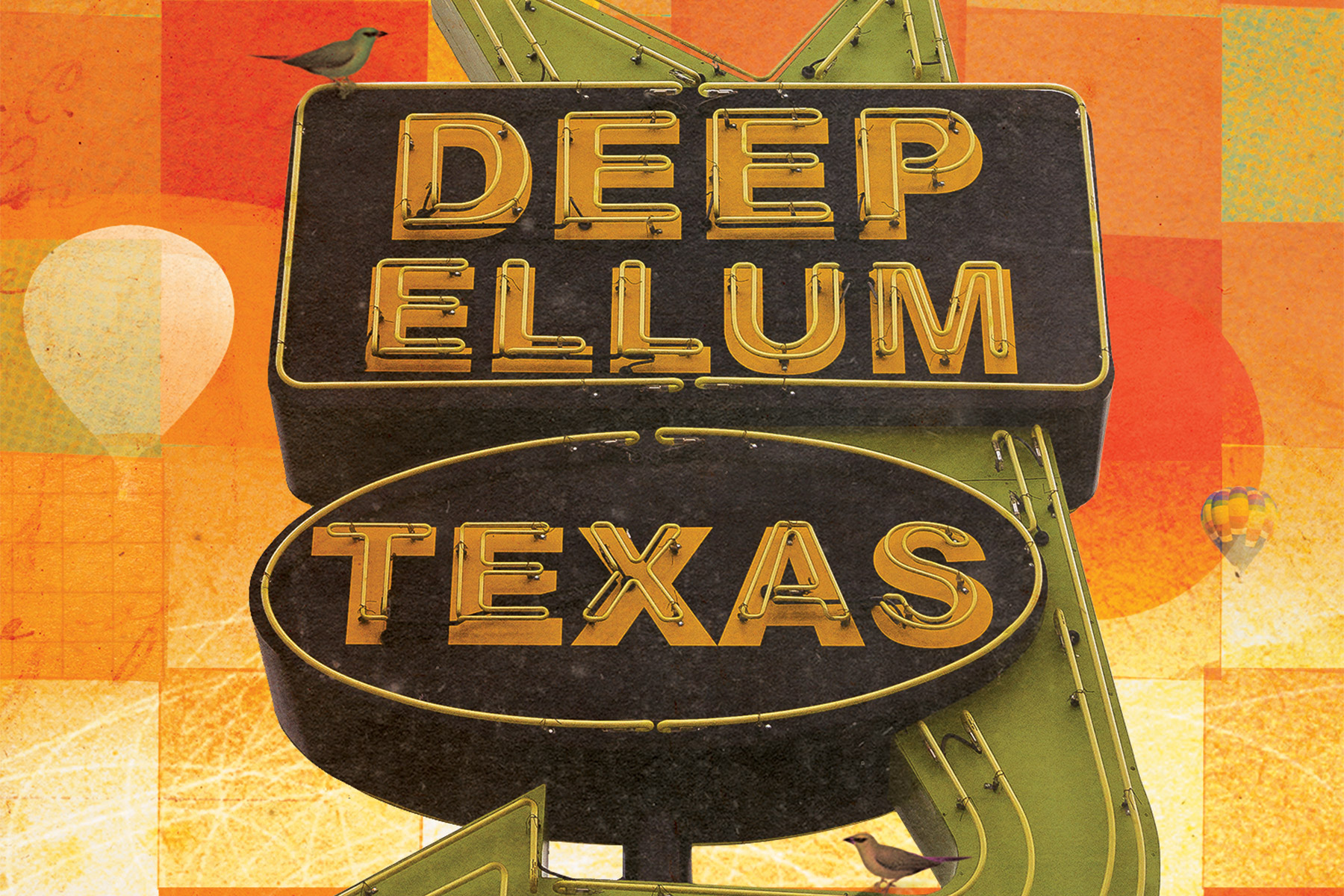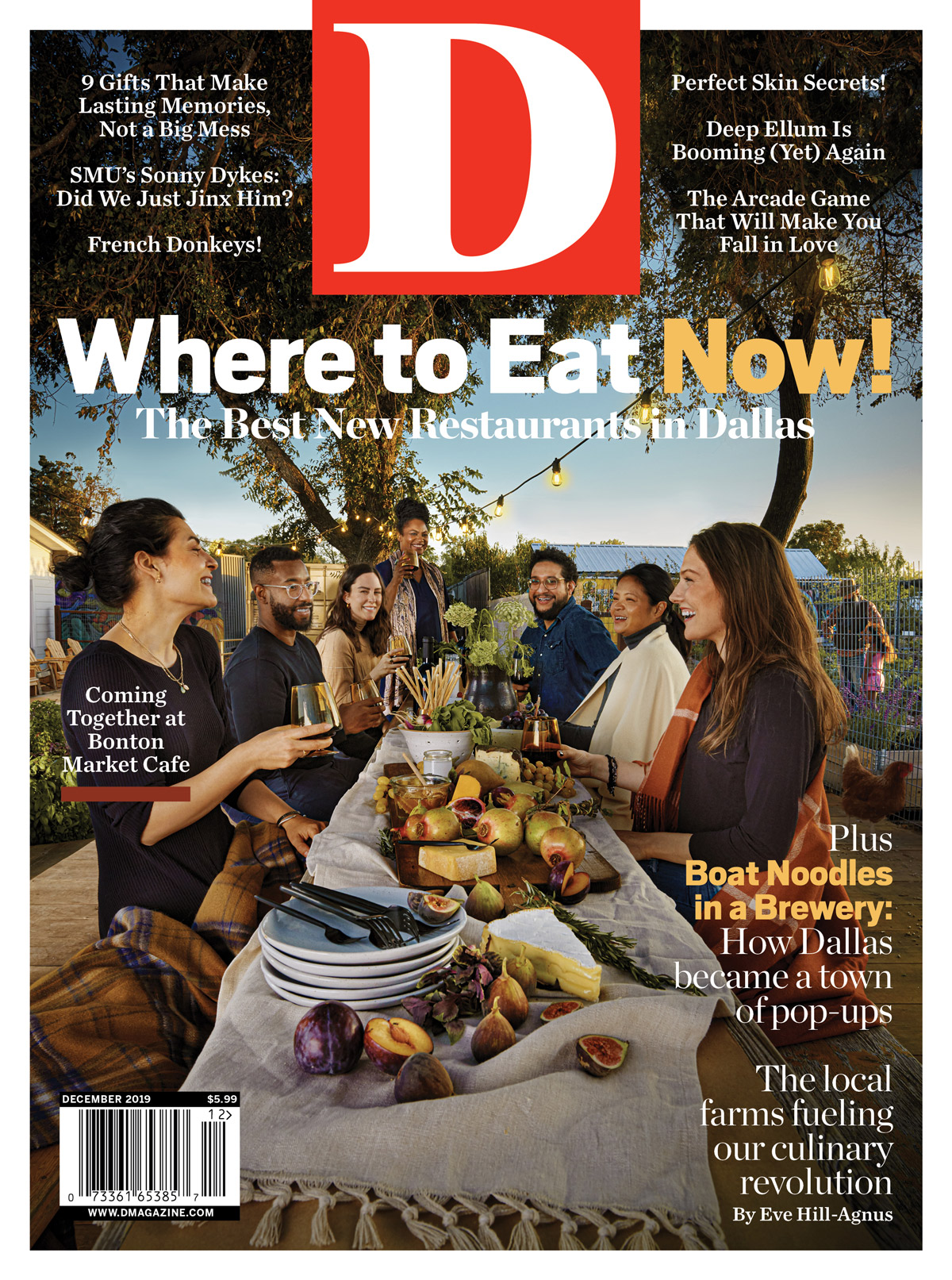There’s an urban experiment underway in Deep Ellum. It began in 2014 when a suburban strip mall developer named Scott Rohrman started buying up the brick warehouses that line Elm, Main, and Commerce streets, transforming them into restaurants, bars, and shops. Rohrman’s enthusiasm for Deep Ellum, a nightlife district prone to booms and busts, befuddled his investors, but he was armed with a volume of Jane Jacobs’ Death and Life of Great American Cities, one of the 20th century’s most influential studies of urban life. Jacobs argued that great cities are driven precisely by the kinds of neighborhoods that Dallas has largely lacked: messy, diverse places where a mix of old and new buildings, services and shops, residences and workplaces, bars and butchers draws people around the clock. People attract more people, generating a vibrancy that Jacobs likened to a pedestrian “ballet.” Rohrman believed that through conscientious leasing and considered adjustments to Deep Ellum’s urban bones, he could get the neighborhood to dance.
On a recent bright and chilly Sunday afternoon in October, Deep Ellum is hopping. A line snakes out the door of Pecan Lodge and down Main Street. The patio of BrainDead Brewing is packed with an SMU crowd nursing the hangovers they earned the night before at Bottled Blonde. Sneaker Politics, a newly imported footwear boutique, has its doors open to the street, blasting hip-hop. Even way up on Main, past Hall Street, where the neighborhood once dissolved into empty lots, twenty-something women in sunglasses and wide-brimmed hats queue up outside a new beignet shop.
This is a new look for Deep Ellum, whose many “golden eras” were solely driven by nightlife. And while that’s true for this renaissance as well—Deep Ellum has rarely been so jammed on Friday and Saturday nights—what is more noticeable about the new Deep Ellum are the new high-rise apartments and office towers sprouting up around its historic core. One of the first, and one of the largest, is the Case Building, a 17-story brick bookend at Main and Hall that rents one-bedroom apartments for about $2,000 per month. A couple blocks away, Baylor University Medical Center is nearly finished with a boxy new administration building that looms over Sons of Hermann Hall. At the other end of the neighborhood is the new Epic office tower, a jagged metal building that wraps around the historic Knights of Pythias Temple and will soon house Uber’s expanded corporate offices, with a promised 3,000 employees.
According to the Deep Ellum Foundation, when all the announced and underway development projects come online, there will be a 75 percent increase in the residential units in Deep Ellum between 2018 and 2020 and a 90 percent increase in office square footage. Jon Hetzel, president of the Deep Ellum Foundation board and partner at Madison Partners, a large Deep Ellum landowner, says that unlike Deep Ellum’s previous booms, this change is permanent. “It is a fundamental shift because, for better or worse, the built environment is changing with the construction of the new projects,” he says.
There is a paradox at work, though. As the neighborhood thrives, a few of Deep Ellum’s oldest, most deeply rooted businesses have begun to struggle.
Pete Zotos, who opened St. Pete’s Dancing Marlin in 1994, says the all-important lunch business at the bar and grill—with its creaky floorboards and wall-mounted fish—is down over the past few years. Loyal customers cite parking difficulties, which are amplified by weekend crowds and increased construction. New residents haven’t yet helped Zotos’ bottom line. I got the same assessment from a number of neighborhood stalwarts. Mike Snider, who opened the AllGood Cafe in 2000, also says his lunch business is stagnant. Frank Campagna, who owns Kettle Art, one of the galleries in the area that hasn’t been replaced by Mohler MMA (Barry Whistler) or a co-working space (The Public Trust), says he has had to move his events from Saturdays to Thursdays because the weekends have become too hectic for art shows.
Over the past year, huge weekend crowds—and concerns about crime—have generated most of the headlines related to Deep Ellum’s evolution. A man was shot and killed in June, and throughout the summer videos surfaced on social media of street brawls and public beatings. But the crowds aren’t as scary to longtime Deep Ellum proprietors as are rising rents. Snider’s rent, for example, has tripled since he opened in 2000, but the roughly $7,600 per month he pays is still a deal compared to the much higher rate paid by the new Japanese restaurant that moved into a single-story brick building across the street from AllGood.
Zotos says he’ll hang on as long as his rent doesn’t get raised, even if he’s perplexed by some of the businesses that can afford Deep Ellum’s new prices. “You can walk down Main Street, and you’re like, Where am I? This doesn’t look like Deep Ellum at all. It’s like Uptown,” Zotos says. “And it’s cool. It’s great to see all kinds of things going on like that. But those guys are paying some stiff, stiff rent. You probably have to have a five-page credit app, and now you need some accredited investor guys with you.”
Consternation over rising rents makes sense in an urban neighborhood undergoing rapid transformation. But Deep Ellum’s growing pains illustrate some of the challenges presented by applying Jacobs’ writing to 21st-century cities.
Jacobs was writing at a time in which old city neighborhoods were threatened by the destructive forces of macro city planning and large-scale urban renewal, which she rightly decried. Jacobs spent less time, however, exploring the insidious, though no less destructive, impact of unrestrained market forces on neighborhood life. (In the end, the market, and not a city planner, would transform Jacobs’ own idealized city block, in New York’s West Village, beyond recognition.) While the market might not bulldoze buildings, it can chase away the proprietors and residents who, over multiple generations, establish neighborhood identity and preserve community memory.
In Deep Ellum, AllGood Cafe plays that role. More than a great place for a quick lunch, AllGood is a social center. Snider tells a story about a day when members of the New Bohemians were sitting at one table, members of the Old 97’s at another, and Ozzy Osbourne walked in. “These guys are laughing, ‘Oh my god, it’s Ozzy Osbourne,’ ” Snider says. “But that’s because one of these three things happens every time you are in the AllGood Cafe: you’ll see someone you know, you’ll meet someone new, or you’ll find out something that’s happening.”
This is the real ballet that Jacobs describes in her book, neighborhoods where the activity of the street is driven not merely by a variety of commercial functions but by a communal life that plays out among the residents of a neighborhood who share both space and memory. There are other survivors in Deep Ellum like this, including St. Pete’s, Kettle Art, Adair’s, Twilite Lounge, Three Links, Sons of Hermann Hall, and others. For Deep Ellum to remain Deep Ellum, it needs to make sure rising rents, clogging crowds, and other market forces don’t drive them out.
Unfortunately, Jacobs doesn’t offer as much help unpacking this side of the urban puzzle. As The New Yorker’s Adam Gopnik once observed, “Jacobs seldom gives a good account of the place of politics in city-making.” Dallas, too, often lacks the political vision and guts to get out ahead of developer inertia to preserve neighborhood interest. And when the city does get involved, it often does more harm than good.
So where does this leave the future Deep Ellum? The Deep Ellum Foundation has drafted a strategic plan for the area, and executive director Stephanie Hudiburg says the organization is partnering with the Urban Land Institute to look at the city of Dallas’ large central services station in Deep Ellum as a potential site of new development and affordable housing. As for the rest of the neighborhood, for now, the holdouts are holding on. Campagna says he is trying to stay optimistic about his neighborhood’s future. Sure, the weekend crowds can be a pain, but he’s happy to have more foot traffic during the week. Sometimes, he says, someone he doesn’t know will wander in off the street and buy a painting. For Campagna it’s a reminder that urban neighborhoods are always changing. Sometimes you have to change with them to survive.
“I’ve heard people complain about Deep Ellum being gentrified since the late ’80s,” Campagna says. “You can go ahead and try to deny it, or you can go with the flow and evolve along with it. I make it work for me.”






